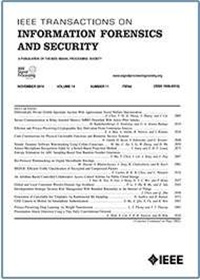5GPT:通过提示工程将GPT-4的零射击能力与领域感知策略相结合的5G漏洞检测
IF 8
1区 计算机科学
Q1 COMPUTER SCIENCE, THEORY & METHODS
IEEE Transactions on Information Forensics and Security
Pub Date : 2025-07-07
DOI:10.1109/TIFS.2025.3586480
引用次数: 0
摘要
识别复杂5G网络协议中的漏洞是一项具有挑战性的任务。手工分析是费时的,而且常常是不充分的。现代ML和NLP方法虽然有效,但资源密集,很难找到隐含的漏洞。在本研究中,我们利用GPT-4的高级语言理解能力直接从5G规范中检测漏洞。为了评估GPT-4在该领域的基本能力,我们首先采用零射击方法,仅依赖于规范文本而不需要外部指导。为了检测更复杂的漏洞,需要深入的上下文理解,我们引入了一种新颖的领域感知策略,在该策略中,我们使用少量学习明确地向GPT-4传授相关工作中的安全属性和危险指标。我们进一步使用思维链提示来指导模型通过结构化的推理步骤来识别可能导致漏洞的违规或利用。两层过滤过程确保只保留有希望的测试用例。我们的方法已经确定了5G移动性管理程序中的47个潜在漏洞,包括27个以前未报告的问题,并生成了相应的测试用例。模拟其中的14个,我们发现了9个漏洞,其中5个是新的。零射击方法在检测程序和验证缺陷方面是有效的,而领域感知方法在发现协议违反和高级攻击场景方面表现出色。这些发现验证了我们的方法,并证明了其在发现5G协议中已知和新漏洞方面的优势。本文章由计算机程序翻译,如有差异,请以英文原文为准。
5GPT: 5G Vulnerability Detection by Combining Zero-Shot Capabilities of GPT-4 With Domain Aware Strategies Through Prompt Engineering
Identifying vulnerabilities in complex 5G network protocols is a challenging task. Manual analysis is time-consuming and often inadequate. Modern ML and NLP methods, though effective, are resource-intensive and struggle to find implicit vulnerabilities. In this research, we utilize GPT-4’s advanced language understanding to detect vulnerabilities directly from 5G specifications. To assess GPT-4’s fundamental capabilities in this domain, we first adopt a zero-shot approach that relies solely on the specification text without external guidance. For detecting more sophisticated vulnerabilities that require deep contextual understanding, we introduce a novel domain-aware strategy, where we explicitly teach GPT-4 about security properties and hazard indicators from related works using few-shot learning. We further employ chain-of-thought prompting to guide the model through structured reasoning steps to identify violations or exploitations that may lead to vulnerabilities. A two-tier filtering process ensures that only promising test-cases are retained. Our method has identified 47 potential vulnerabilities in 5G mobility management procedures, including 27 previously unreported issues, and generated corresponding test-cases. Simulating 14 of them, we have found 9 vulnerabilities, five of which are new. The zero-shot approach is effective in detecting procedural and validation flaws, while the domain-aware method excels in finding protocol violations and advanced attack scenarios. These findings validate our methodology and demonstrate its strength in discovering both known and novel vulnerabilities in 5G protocols.
求助全文
通过发布文献求助,成功后即可免费获取论文全文。
去求助
来源期刊

IEEE Transactions on Information Forensics and Security
工程技术-工程:电子与电气
CiteScore
14.40
自引率
7.40%
发文量
234
审稿时长
6.5 months
期刊介绍:
The IEEE Transactions on Information Forensics and Security covers the sciences, technologies, and applications relating to information forensics, information security, biometrics, surveillance and systems applications that incorporate these features
 求助内容:
求助内容: 应助结果提醒方式:
应助结果提醒方式:


